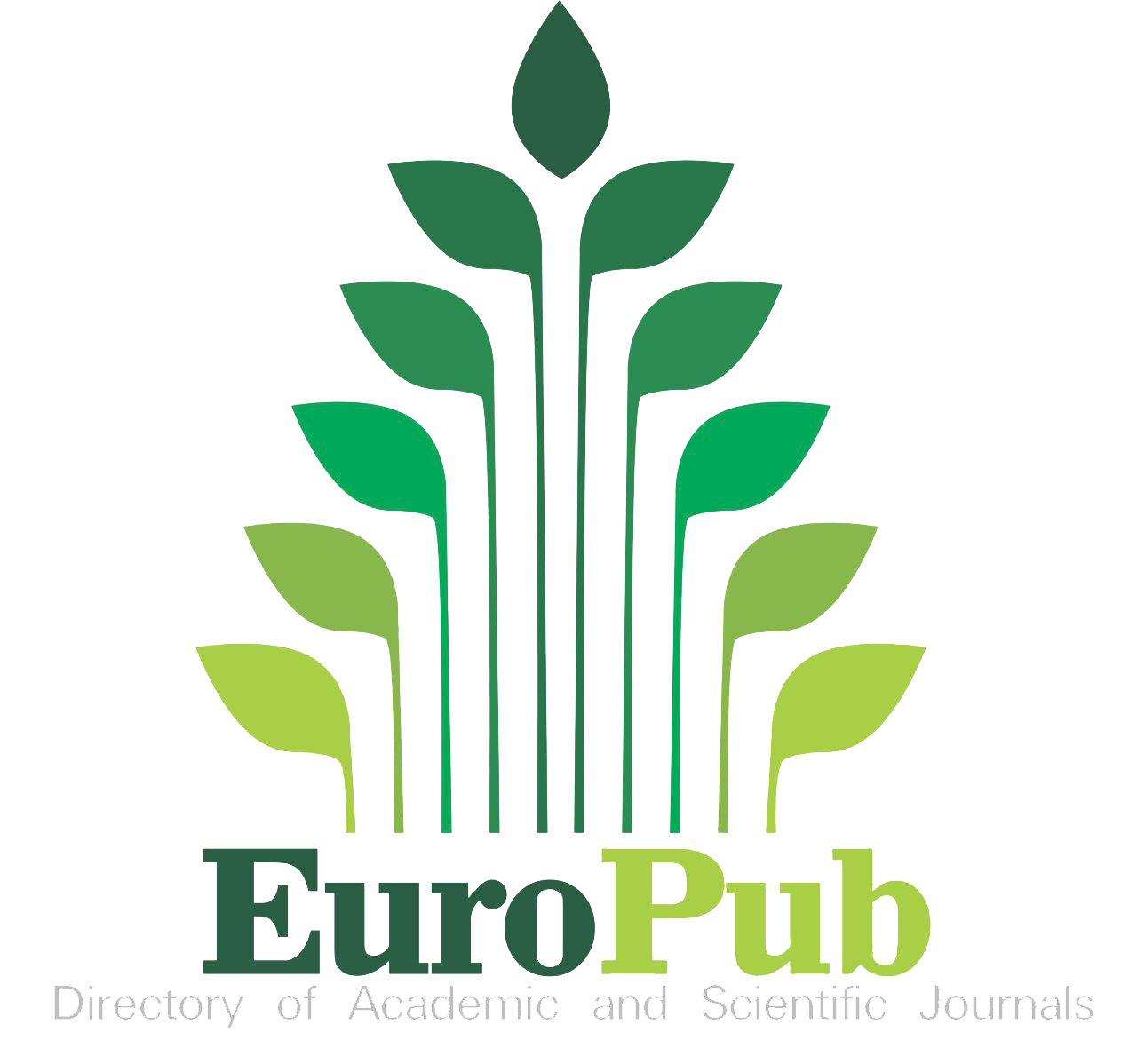Promoting Community Gardening Among Small-scale Ethnic Minority Producers: A Case of Maryland
DOI:
https://doi.org/10.54536/ajee.v4i1.4232Keywords:
Adoption, Capacity-Building, Extension Program, Food Security, Knowledge GainAbstract
Food insecurity disproportionately affects minority populations, and addressing it has become a daunting challenge amidst a rapidly growing population and changing climate. Community gardening has emerged as an effective tool to combat food insecurity and ensure a sustainable agrifood system. However, the participation of ethnic minority populations in community gardening is low due to several factors, including lack of knowledge, skills, awareness, technical support, and motivation. This study evaluated the impact of an Extension project on the knowledge, skills, perception, and practices of 36 small-scale ethnic minority producers involved in community gardening in Maryland. The results showed improvements in gardening knowledge and skills and increased awareness of the benefits of community gardening. Most participants expressed willingness to continue gardening, participate in community-building activities, and share their knowledge among friends and relatives, indicating an increased awareness of the need to adopt the need for the adoption of sustainable food production strategies. These findings underscore the importance of tailoring extension programs to meet the participant’s specific needs, enhance knowledge, and promote the broader adoption of community gardening.
Downloads
References
Alaimo, K., Packnett, E., Miles, R. A., & Kruger, D. J. (2008). Fruit and vegetable intake among urban community gardeners. Journal of Nutrition Education and Behavior, 40(2), 94–101. https://doi.org/10.1016/j.jneb.2006.12.003
Algert, S. J., Baameur, A., & Renvall, M. J. (2014). Vegetable output and cost savings of community gardens in San Jose, California. Journal of the Academy of Nutrition and Dietetics, 114(7), 1072–1076. https://doi.org/10.1016/j.jand.2014.02.030
Armstrong, D. (2000). A survey of community gardens in upstate New York: Implications for health promotion and community development. Health and Place, 6(4), 319–327. https://doi.org/10.1016/S1353-8292(00)00013-7
Aubry, C., Ramamonjisoa, J., Dabat, M. H., Rakotoarisoa, J., Rakotondraibe, J., & Rabeharisoa, L. (2012). Urban agriculture and land use in cities: An approach with the multi-functionality and sustainability concepts in the case of Antananarivo (Madagascar). Land Use Policy, 29(2), 429–439. https://doi.org/10.1016/j.landusepol.2011.08.009
Blair, D. (2009). The child in the garden: An evaluative review of the benefits of school gardening. Journal of Environmental Education, 40(2), 15–38. https://doi.org/10.3200/JOEE.40.2.15-38
Campbell, M. C. (2004). Building a common table: The role for planning in community food systems. Journal of Planning Education and Research, 23(4), 341–355. https://doi.org/10.1177/0739456X04264916
Cohen, N., Chou, J., & Stephenson, R. (2012). Five Borough Farm: Seeding the future of urban agriculture in New York City. https://doi.org/10.13140/RG.2.1.2236.0806
Coleman-Jensen, A., Rabbitt, M. P., Gregory, C. A., & Singh, A. (2022). Household food security in the United States. Economic Research Report, 155.
Doyle, R., & Krasny, M. (2003). Participatory rural appraisal as an approach to environmental education in urban community gardens. Environmental Education Research, 9(1), 91–115. https://doi.org/10.1080/13504620303464
Drake, L., & Lawson, L. J. (2015). Results of a US and Canada community garden survey: Shared challenges in garden management amid diverse geographical and organizational contexts. Agriculture and Human Values, 32(2), 241–254. https://doi.org/10.1007/s10460-014-9558-7
Draper, C., & Freedman, D. (2010). Review and analysis of the benefits, purposes, and motivations associated with community gardening in the United States. Journal of Community Practice, 18(4), 458–492. https://doi.org/10.1080/10705422.2010.519682
Evers, A., & Hodgson, N. L. (2011). Food choices and local food access among Perth’s community gardeners. Local Environment, 16(6), 585–602. https://doi.org/10.1080/13549839.2011.575354
FAO, IFAD, UNICEF, WFP and WHO. (2022). The state of food security and nutrition in the world 2022: Repurposing food and agricultural policies to make healthy diets more affordable. FAO, IFAD, UNICEF, WFP and WHO. https://doi.org/10.4060/cc0639en
Flanigan, S., & Varma, R. (2006). Promoting community gardening to low-income urban participants in the women, infants and children programme (WIC) in New Mexico. Community, Work and Family, 9(1), 69–74. https://doi.org/10.1080/13668800500420806
Glover, T. D., Parry, D. C., & Shinew, K. J. (2005). Building relationships, accessing resources: Mobilizing social capital in community garden contexts. Journal of Leisure Research, 37(4), 450–474. https://doi.org/10.1080/00222216.2005.11950062
Golan, E. H., Stewart, H., Kuchler, F., & Dong, D. (2008). Can low-income Americans afford a healthy diet? Amber Waves: The Economics of Food, Farming, Natural Resources, and Rural America.
Gottlieb, R., & Fisher, A. (1996). Community food security and environmental justice: Searching for a common discourse. Agriculture and Human Values, 13(3), 23–32. https://doi.org/10.1007/bf01538224
Gregory, M. M., Leslie, T. W., & Drinkwater, L. E. (2016). Agroecological and social characteristics of New York City community gardens: contributions to urban food security, ecosystem services, and environmental education. Urban Ecosystems, 19(2), 763–794. https://doi.org/10.1007/s11252-015-0505-1
Greider, W. (2000). The Last Farm Crisis. Nation, 271(16), 11–16.
Guitart, D., Pickering, C., & Byrne, J. (2012). Past results and future directions in urban community gardens research. Urban Forestry and Urban Greening, 11(4), 364–373. https://doi.org/10.1016/j.ufug.2012.06.007
Hargrove, T. M., & Jones, B. L. (2004). A qualitative case study analysis of the small farmers outreach training and technical assistance (2501) program from 1994-2001: Implications for African American Farmers. Journal of Agricultural Education, 45(2), 72–82. https://doi.org/10.5032/jae.2004.02072
Haynes-Maslow, L., Auvergne, L., Mark, B., Ammerman, A., & Weiner, B. J. (2015). Low-income individuals’ perceptions about fruit and vegetable access programs: A qualitative study. Journal of Nutrition Education and Behavior, 47(4), 317-324.e1. https://doi.org/10.1016/j.jneb.2015.03.005
Holland, L. (2004). Diversity and connections in community gardens: A contribution to local sustainability. Local Environment, 9(3), 285–305. https://doi.org/10.1080/1354983042000219388
Jettner, J. F. (2017). Community gardens: Exploring race, racial diversity and social capital in urban food deserts. Virginia Commonwealth University. https://scholarscompass.vcu.edu/etd/4784
Joseph, H. (1999). Re-defining community food security. Community Food Security News, 3, 12–13.
Karki, L. B., & Bhandari, P. B. (2023). The significance of urban gardening on the household economy: A case of minority urban gardeners. Professional Agricultural Workers Journal, 9(2), 9–25. https://tuspubs.tuskegee.edu/pawj
Krasny, M. E., & Tidball, K. G. (2009). Applying a resilience systems framework to urban environmental education. Environmental Education Research, 15(4), 465–482. https://doi.org/10.1080/13504620903003290
Lee, S. H. (2001). Community gardening benefits as perceived among American-born and immigrant gardeners in San Jose, California [Unpublished manuscript]. http://nature.berkeley.edu/classes/es196/projects/2002final/Lee.S.pdf
Loopstra, R., & Tarasuk, V. (2013). Perspectives on community gardens, community kitchens and the good food box program in a community-based sample of low-income families. Canadian Journal of Public Health, 104(1), e55–e59. https://doi.org/10.1007/bf03405655
Mahato, A. (2014). Climate change and its impact on agriculture. International Journal of Scientific and Research Publications, 4(4), 1–6.
Malberg Dyg, P., Christensen, S., & Peterson, C. J. (2020). Community gardens and wellbeing amongst vulnerable populations: A thematic review. Health Promotion International, 35(4), 790–803. https://doi.org/10.1093/heapro/daz067
Marshall, R. W. (2012). The impact of the extension service on minority-owned small farm operations. Journal of Extension, 50(1), 11. https://doi.org/10.34068/joe.50.01.11
Maxwell, D. (2002). The importance of urban agriculture in food and nutrition. Etc-Ruaf, 5. http://www.ruaf.org/sites/default/files/food_security_nutrition.pdf
Mc Carthy, U., Uysal, I., Badia-Melis, R., Mercier, S., O’Donnell, C., & Ktenioudaki, A. (2018). Global food security – Issues, challenges and technological solutions. Trends in Food Science and Technology, 77, 11–20. https://doi.org/10.1016/j.tifs.2018.05.002
McCormack, L. A., Laska, M. N., Larson, N. I., & Story, M. (2010). Review of the nutritional implications of farmers’ markets and community gardens: A call for evaluation and research efforts. Journal of the American Dietetic Association, 110(3), 399–408. https://doi.org/10.1016/j.jada.2009.11.023
McCullum, C., Desjardins, E., Kraak, V. I., Ladipo, P., & Costello, H. (2005). Evidence-based strategies to build community food security. Journal of the American Dietetic Association, 105(2), 278–283. https://doi.org/10.1016/j.jada.2004.12.015
Meadows, D. (2000, November 06). Two brothers talk carbon sequestration. Grist. https://grist.org/article/how/
Meenar, M., & Hoover, B. (2012). Community Food Security via Urban Agriculture: Understanding People, Place, Economy, and Accessibility from a Food Justice Perspective. Journal of Agriculture, Food Systems, and Community Development, 143–160. https://doi.org/10.5304/jafscd.2012.031.013
Nugent, R. (2000). The impact of urban agriculture on the household and local economies. Growing Cities, Growing Food: Urban Agriculture on the …, 67–97. http://wentfishing.net/farmlit/Theme3.pdf
Okvat, H. A., & Zautra, A. J. (2011). Community Gardening: A Parsimonious Path to Individual, Community, and Environmental Resilience. American Journal of Community Psychology, 47(3–4), 374–387. https://doi.org/10.1007/s10464-010-9404-z
Pimentel, J. L. (2010). A note on the usage of Likert Scaling for research data analysis. USM R&D Journal, 18(2), 109–112.
Poulsen, M. N., Hulland, K. R. S., Gulas, C. A., Pham, H., Dalglish, S. L., Wilkinson, R. K., & Winch, P. J. (2014). Growing an urban oasis: A qualitative study of the perceived benefits of community gardening in Baltimore, Maryland. Culture, Agriculture, Food and Environment, 36(2), 69–82. https://doi.org/10.1111/cuag.12035
Ray, D. K., Mueller, N. D., West, P. C., & Foley, J. A. (2013). Yield Trends Are Insufficient to Double Global Crop Production by 2050. PLOS ONE, 8(6), e66428-. https://doi.org/10.1371/journal.pone.0066428
Reuther, S., & Dewar, N. (2006). Competition for the use of public open space in low-income urban areas: The economic potential of urban gardening in Khayelitsha, Cape Town. Development Southern Africa, 23(1), 97–122. https://doi.org/10.1080/03768350600556273
Saldivar-Tanaka, L., & Krasny, M. E. (2004). Culturing community development, neighborhood open space, and civic agriculture: The case of Latino community gardens in New York City. Agriculture and Human Values, 21(4), 399–412. https://doi.org/10.1007/s10460-003-1248-9
Santo, R., Palmer, A., & Kim, B. (2016). Vacant lots to vibrant plots: A review of the benefits and limitations of urban agriculture. https://doi.org/10.13140/RG.2.2.25283.91682
Schrup, J. (2018). Barriers to community gardening in Portland, OR. [University Honors Theses, Portland State University]. https://doi.org/10.15760/honors.786
Tembo, R., & Louw, J. (2013). Conceptualising and implementing two community gardening projects on the Cape Flats, Cape Town. Development Southern Africa, 30(2), 224–237. https://doi.org/10.1080/0376835X.2013.797220
Tilman, D., Balzer, C., Hill, J., & Befort, B. L. (2011). Global food demand and the sustainable intensification of agriculture. Proceedings of the National Academy of Sciences, 108(50), 20260–20264.
Twiss, J., Dickinson, J., Duma, S., Kleinman, T., Paulsen, H., & Rilveria, L. (2003). Community gardens: Lessons learned from California healthy cities and communities. American Journal of Public Health, 93(9), 1435–1438. https://doi.org/10.2105/AJPH.93.9.1435
United Nations Department of Economic and Social Affairs. (2024). World population prospects 2024: Summary of results. UN DESA/POP/2024/TR/NO. 9. New York: United Nations. https://www.un.org/development/desa/pd/sites/www.un.org.development.desa.pd/files/files/documents/2024/Jul/wpp2024_summary_of_results_final_web.pdf
United Nations Department of Economic and Social Affairs. (2019). World urbanization prospects 2018: Highlights. ST/ESA/SER.A/421. New York: United Nations. https://doi.org/10.18356/6255ead2-en
United Nations Department of Economic and Social Affairs. (2022). World population prospects 2022: Summary of results. UN DESA/POP/2022/TR/NO. 3. New York: United Nations. https://www.un.org/development/desa/pd/sites/www.un.org.development.desa.pd/files/wpp2022_summary_of_results.pdf
Wakefield, S., Yeudall, F., Taron, C., Reynolds, J., & Skinner, A. (2007). Growing urban health: Community gardening in South-East Toronto. Health Promotion International, 22(2), 92–101. https://doi.org/10.1093/heapro/dam001
Zhang, X., Zhang, Y., & Zhai, J. (2021). Home garden with eco-healing functions benefiting mental health and biodiversity during and after the COVID-19 pandemic: A scoping review. Frontiers in Public Health, 9, 740187. https://doi.org/10.3389/fpubh.2021.740187
Downloads
Published
How to Cite
Issue
Section
License
Copyright (c) 2025 Dipendra Gurung, Lila B. Karki, Prem B. Bhandari, Sahil Ojha

This work is licensed under a Creative Commons Attribution 4.0 International License.







